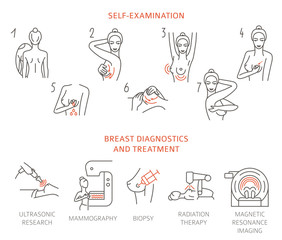Cheryl shifted uncomfortably in her seat. This has to be a dream… Somebody, anybody please wake me up. Gently, she sank her teeth into her bottom lip in an attempt to confirm if this was really happening, if she was waiting on the doctor for her results.
As soon as he walked in, she studied his face hoping that his facial expression will tell her what she needed to know before he even opened his mouth. If only wishes came through, she’ll wish for a piece of different news, change of diagnoses, hope, just anything to keep her world from falling as it was about to. Breast cancer at 35? That’s not what the internet said when she googled her symptoms.
“Miss Cheryl”. His soft-spoken tone almost brought her to tears. “We can discuss the way forward when you are stable–”
“– No, let’s talk right now, doctor’, she interrupted.
Doctor Effiong handed Cheryl a tissue. Only then did she realize that a tear had escaped her eyes. “Ok, I’ll tell you all you should know about breast cancer and you’re free to ask questions at any point” He started. Cheryl nodded in the affirmative with a sniff.
Simply put, breast cancer is the abnormal growth of breast cells. These cells grow faster than normal cells and then, accumulate. With time, they give signs and symptoms and may even spread to other cells in the body and this is called metastasis. Now, the type of breast cancer depends on the part of the breast it affects. Example ductal carcinoma in situ, invasive ductal or lobular carcinoma, triple-negative breast cancer, inflammatory breast cancer and so many more. It is the commonest cancer among women and you are not alone, research shows that over 200,000 women in the world are diagnosed with breast cancer yearly.

Cheryl had gotten a hold of herself now and was all ears. She said, “Doctor, I noticed a lump in my breast, it became swollen and the skin colour changed beginning to look like an orange peel. It was so uncomfortable and itchy but not painful initially. The pains came later and I noticed I started having small ulcers on the breast and that’s when it began to look serious to me. I never thought it was breast cancer because of how young I am. So why did I have breast cancer? I recall my mother had the same but she was 60 before it was diagnosed. Why me? Why now?” Cheryl asked with so many other questions to go.
Dr Effiong took a deep breath before responding, “Before we get to why, let me tell you why you are at risk. Risk factors of breast cancer are classified into controllable and non-controllable. As the name implies, not so much can be done about the non-controllable risk factors like gender – being female, a positive family history, black race, age and genetics. The ones that can be controlled are the choice of food we take – low dietary fat is advised, the kind of lifestyle we lead – no smoking and reduced alcohol intake, how active we are daily, radiation exposure, use of hormone replacement therapy and lastly, how serious we take medical examinations. Medical examinations should be done at least yearly and self-breast examination should be done monthly. As such, specific causes are not known but these risk factors have been identified”.
Cheryl was also worried about her siblings and friends who did not have breast cancer. As someone who had been diagnosed with the disease, she wanted to know if there was any hope she could share with her loved ones.
When Cheryl asked about the hope she could give her siblings and friends, Dr Effiong had some reassuring news. He explained that breast cancer is preventable, but those with a family history of the disease need to take particular care to reduce their risk. He advised them to avoid smoking and excessive alcohol consumption, exercise regularly, maintain a healthy weight, and conduct monthly self-breast examinations. Dr Effiong stressed that early detection is key, and anyone who experiences any lumps or discomfort in their breast should report it immediately. “Breast cancer can be cured if detected early”, he emphasized.
Cheryl also asked about mammography, a term she had heard before but wasn’t sure about. Dr Effiong explained that mammography is a medical imaging examination used for breast cancer screening and diagnosis. Cheryl nodded her head, indicating her understanding.
After the discussion, Dr Effiong asked Cheryl if she had any more questions. She had none, so he explained the available treatment options. Cheryl was relieved to know that medications, chemotherapy, surgery, radiotherapy, and other supportive measures were available to her. Dr Effiong advised Cheryl to rest and reflect on what they had discussed, and they could go into more detail about treatment options at their next meeting.

Cheryl left Dr Effiong’s office feeling much better than when she arrived. She was grateful for his advice and for the hope he had given her. Cheryl felt ready to face her diagnosis head-on, armed with knowledge and a plan.



This was such a captivating piece. Welldone
Thank you Dr. Etini, I’m glad it kept you glued.